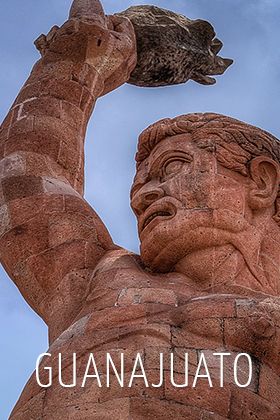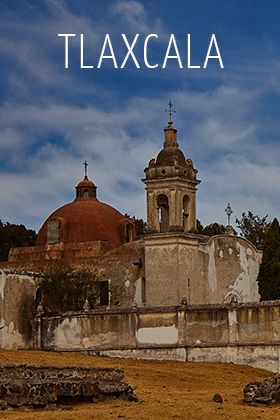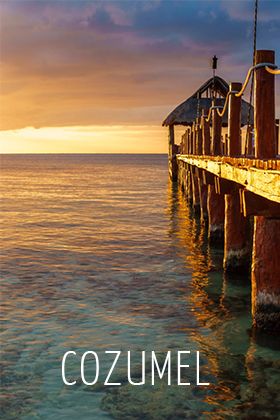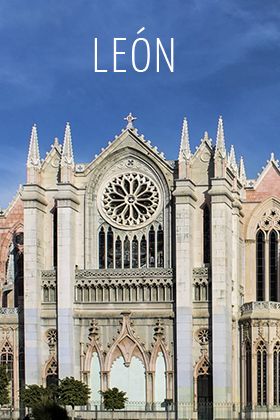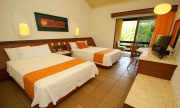Description
Situated at the foot of the majestic Sierra Madre Occidental, the state capital of Sinaloa, Culiacán, Culiacan Rosales officially, is a city rich in culture and history.

State: Sinaloa
Coordinates:
24°48'15"N 107°25'52"W
Altitude: 54 meters above sea level
Area:
km²
Time Zone: Pacific Time UTC-7
Population: 675,773 inhabitants (INEGI, 2010)
Area Code: 667
Its history begins in pre-Hispanic times when part of its territory was inhabited by indigenous groups called Tebacas, Pacaxes, Sabaibo, and Achires. Back then it was called Culhuacán or Teocolhuacán which means place of snakes, Crooked Hill, or where the roads twist and where the Coaltzin God is worshiped.
Today, Culiacán is equipped with excellent industrial and tourist infrastructure and has all the amenities of a large city such as malls, luxury hotels, restaurants, bars, and numerous places of entertainment.
An example of the tradition of Culiacán can be found on the boardwalk or Malecon Viejo since it is the center of recreation bringing together families to a playground and green areas.
One of the best ways to get to know the most beautiful places of the city is undoubtedly the bus called El Sinaloense whose route takes passengers to the main attractions of the city such as the museums, churches, and historic monuments. Be sure to admire, housed behind the doors of the Constitution Civic Center, the mosaic mural by artist Rolando Arjona Amabilias, as well as the mural by Alfonso Villanueva and Amancio Jiménez located in the Central Library of the Universidad Autónoma de Sinaloa.
Another major attraction of the city is the Bacubirito meteorite at the Sinaloa Science Center. It is about 19 tons and is considered to be the fifth largest in the world.
The typical handicrafts of the city are the pots, pans, clay work, pottery, textiles and yarn spun from cactus, tule ixtle.
Among the more traditional culinary specialties of Sinaloa are enchiladas del suelo, a meat stew called la cazuela, a meat dish of el cocido, and delicious cookies called las coyatas and los tacuarines. Typical drinks are coconut, white atole, rice, and the alcoholic pineapple drink of tepache. The most traditional sweets of Culiacán are rice pudding, the peanut candies called pepitorias and the delicious tres leches cake.
On the outskirts of Culiacan you’ll find several spas, recreation centers, and hot springs.
If you are looking for an adventure deep into nature the best option is the town of San Francisco de Tacuichamona, the starting point for excursions to the old part of the region where you can see the petroglyphs of the ancient civilizations that inhabited the region.
How to get there?
Culiacán is bordered to the north by Badiraguato, to the south by the Gulf of California, to the east by Cosalá and the state of Durango, with Novalato to the west.
Culiacan is connected to the rest of Mexico by roads and highways.
Federal Road No. 15 which connects to the north with the city of Los Mochis, south to Mazatlan, Tepic and Guadalajara.
Moreover the Federal International Airport of Culiacan services the area with connections to the main destinations in Mexico and Los Angeles, California.
Distance from Culiacan to other destinations in Mexico
- Los Mochis, Sinaloa: 212 km.
- Mazatlán, Sinaloa: 223 km.
- Tepic, Nayarit: 502 km.
- Guadalajara, Jalisco: 710 km.
- Zacatecas, Zacatecas: 825 km.
- Aguascalientes, Aguascalientes: 920 km.
- Morelia, Michoacán: 995 km.
- Monterrey, Nuevo León: 1120 km.
- Mexico City, Federal District: 1256 km.
Climate
Culiacán's climate is hot and humid during the summer, while the winter is mild.
The average annual temperature is 24°C.
The rainy months are July, August, and September.
January and February: Maximum 28 ° C Minimum 10 ° C.
During the rest of the year: Maximum 35 ° C Minimum 12 ° C.
What to pack?
Light clothing, sandals, cool shirts, and a hat in the summer are recommended.
If you plan to visit the spas of the city you must wear a bathing suit, sandals, sunscreen, and insect repellent. In the winter, pack light clothing, sweaters, and shoes.
Attractions and Activities in Culiacan
Spas and Hot Springs.
The Tourist Bus El Sinaloense (City Tour).
Cathedral Basilica de San Miguel Arcángel (formerly Nuestra Señora del Rosario) Shrine of the Sagrado Corazón de Jesús, La Lomita Temple, Imala Temple, ruins of the Tabalá Temple, Cuauhtemoc Monument, and City Hall.
Sinaloa Art Museum (MASIN), Museum of the Constitution Civic Center, the private Museum of Manuel Delgado El Chino, Frida Kahlo Art Gallery. López-Infante House-Museum.
Gustavo Garmedia Market, Civil Rosales Colegio, the Government Palace, the State Congress.
Cultural Center of the Research and Promotion of Regional Culture. Sinaloa Science Center, Culiacan Botanical Garden.
Tour and visit to the petroglyphs at the town of San Francisco de Tacuichamona.
Feast and Festivals in Culiacan
September 29 and 30: Celebration on the founding of the city.
February 2: Feast of the Virgen de Nuestra Señora del Rosario de Quilá.
February 2: Candlemas Day.
November: agricultural, livestock, commercial, and industrial exhibition
November 1 and 2: Day of the Dead Celebration.
December (date varies): Meet Yoreme Alternativo (Indigenous Cultural Meeting).
December 12: Feast of the Virgen de Guadalupe.





